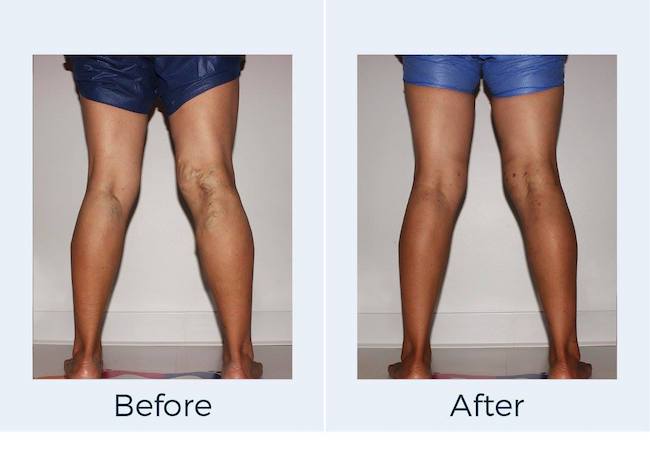Sclerotherapy can help treat the pain and swelling of varicose veins.
Varicose veins affect about 40 million people in the U.S. It’s a more common condition in women, but men do get them. Walking and massage can help with varicose and spider veins, but they won’t go away on their own. If you’re experiencing pain and discomfort, you may want to look into sclerotherapy.
Sclerotherapy is a procedure that’s used to treat blood vessels and blood vessel malformations as well as problems with the lymphatic system. It’s commonly used to treat varicose veins and spider veins.

It’s a non-surgical procedure and only requires an injection of a medicine called a sclerosant. This solution is injected into the vein or lymph vessel. It causes the vein to swell, which cuts off the flow of blood or lymphatic fluid. In turn, the vein shrinks.
What Causes Varicose Veins?
Varicose veins, also called chronic venous insufficiency, are caused when the veins swell and bulge out from the skin. This happens because the wall of the vein is weak. This causes the vein valves to become weak as well. As blood collects in the veins, swelling appears. Age and family history can also play a factor in varicose and spider veins. Along with being painful, they can cause skin issues such as rashes. Sclerotherapy helps to reduce this damage and makes the vein less visible and less painful.
Varicose and spider veins don’t always need treatment. If you’re not in discomfort, it might not be necessary unless you’re uncomfortable because of cosmetic issues.
Sclerotherapy is an option when:
- The veins are painful.
- There’s a rash.
- The legs feel sore.
- The skin on legs or feet is dry or patchy.
Types of Sclerotherapy
Liquid: Liquid sclerotherapy is good for spider veins and small to medium-size varicose veins. It’s injected with a very fine needle. It works by displacing the blood in the vein, which causes the vein to collapse. Solution strengths are varied depending upon the size of the vein.
Foam: Foam sclerotherapy solution is thicker in consistency (similar to shaving cream). It’s stronger than liquid and more useful for medium and larger veins. When injected, it displaces the blood and stays in contact with the vessel lining longer than liquid sclerosants.
Vein specialists and dermatologists can provide sclerotherapy right in their office. Recovery is generally pretty easy. After the procedure, the patient may need to wear compression stockings for a while. This helps to keep the vein closed and limits the amount of blood that can collect in the collapsed vein. For several spider or varicose veins, multiple treatments may be necessary. Some negative side effects could include bruising, pain, or redness, but it’s typically minor.
If you’re experiencing varicose or spider veins, or just want to find out more about sclerotherapy, contact American Vein & Vascular.
Have you had a sclerotherapy procedure? Let us know your thoughts in the comments.
